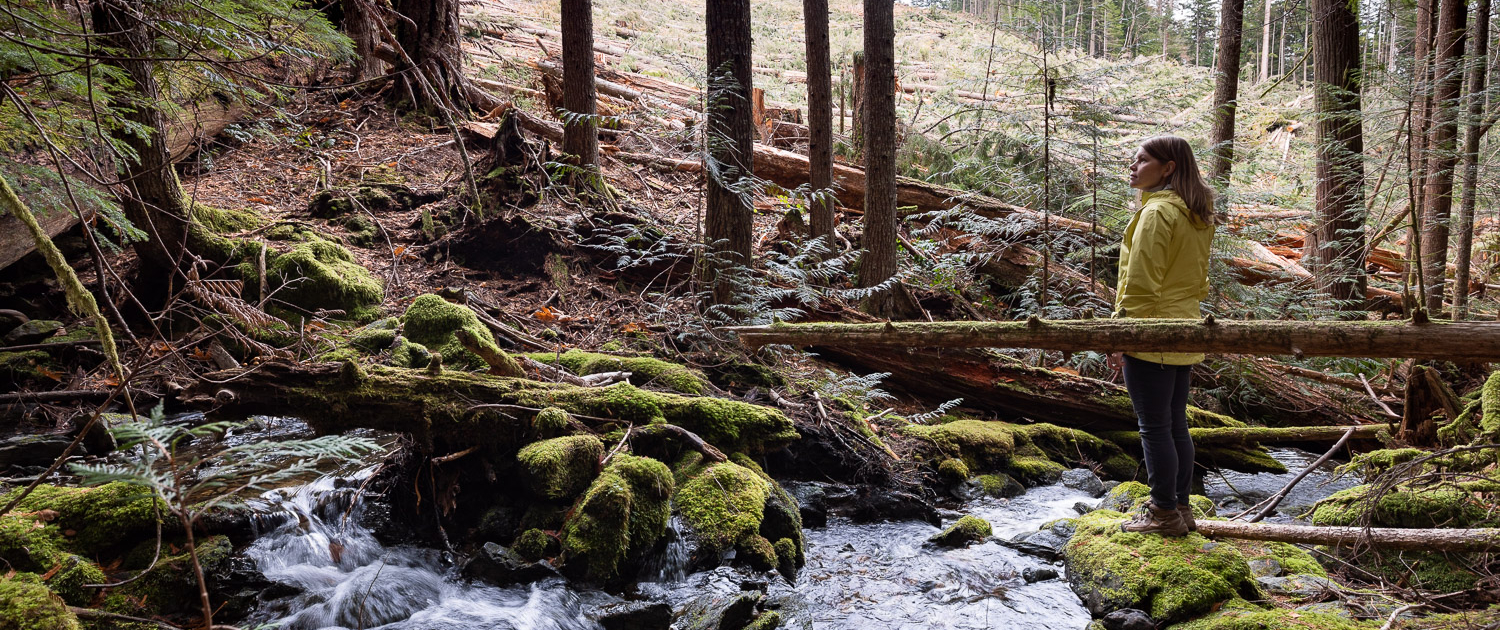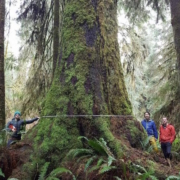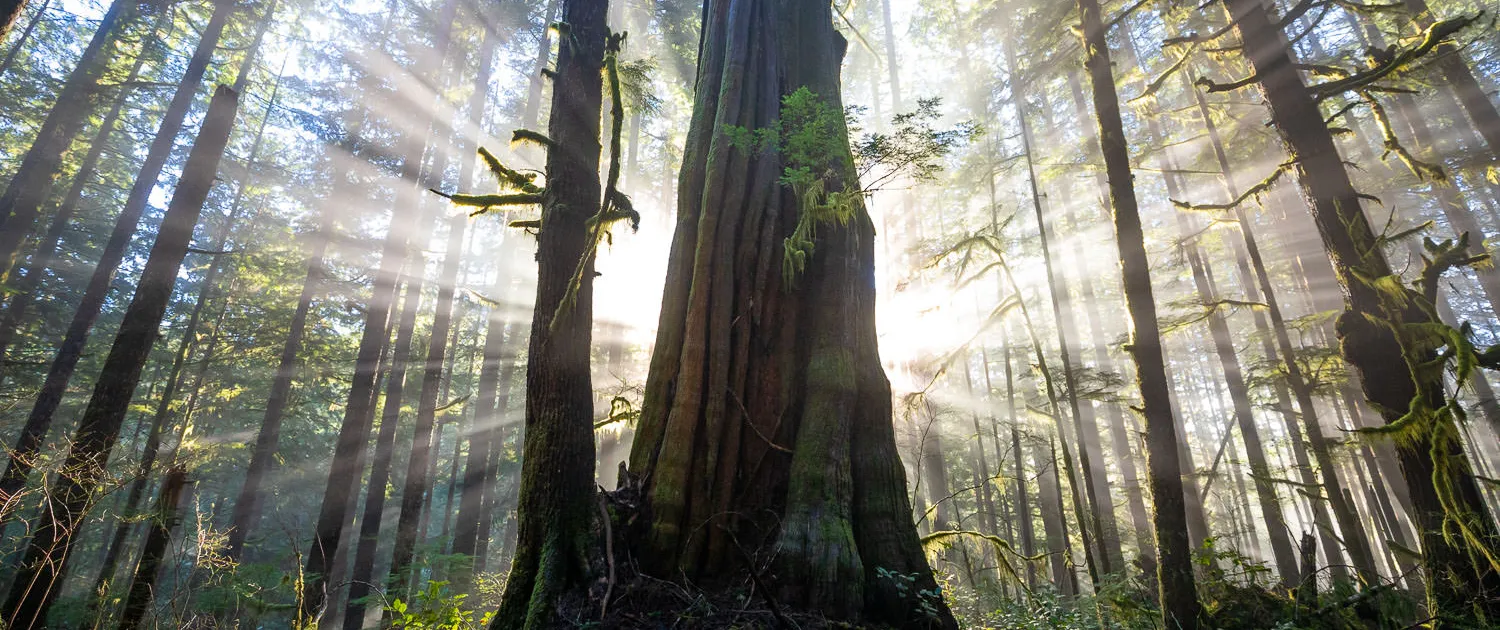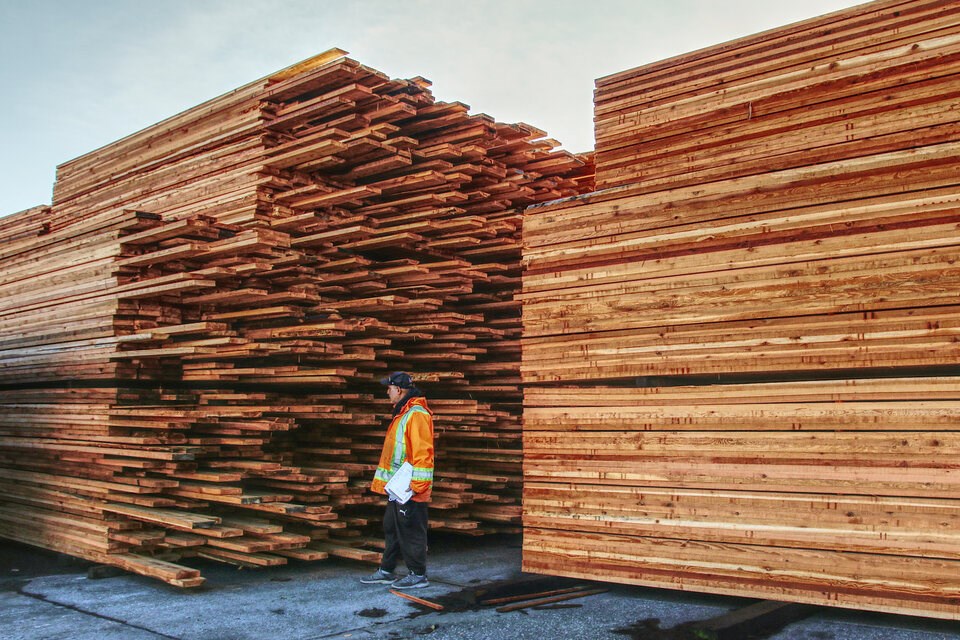 Mar 8 2020
Mar 8 2020Cathedral Grove at risk from old growth logging uphill from popular site, say conservationists
CBC News British Columbia
March 8th, 2020
Ancient Forest Alliance demands province set aside money to buy private lands near MacMillan Provincial Park

Conservationists on Vancouver Island have renewed a demand that the province set aside money to buy private lands to stop the logging of old growth trees.
The call came this week after the Ancient Forest Alliance (AFA) and the Port Alberni Watershed-Forest Alliance drew attention to logging happening close to one of the most-visited stands of protected old growth trees in the province — Cathedral Grove in MacMillan Provincial Park.
Since late 2019 Mosaic Forest Management has been logging on Mt. Horne, which is uphill from the park known for its ancient Douglas firs, some of which are up to 800 years old.
Conservationists say that old growth trees in dense forests support biodiversity and are important areas to protect in the fight against climate change. They are also prized by loggers for their value.
Campaigners against the logging on Mt. Horne argue that that by cutting close to the park, and deforesting the hillside above it, Cathedral Grove will become more at risk to windstorms, erosion and the loss of habitat.
In 1997, a severe windstorm toppled hundreds of trees and destroyed sections of the trail in Cathedral Grove.
“Its ecological integrity continues to be undermined as the B.C. government allows clear cut logging to encroach closer and closer to the MacMillan Provincial Park boundary,” said TJ Watt, with the AFA in a release.

Watt and others have, for years, asked that the province create a natural lands acquisition fund to identify critical areas for biodiversity or with First Nations cultural value and purchase them from private owners.
Vancouver Island’s Capital Regional District has a Land Acquisition Fund, which collects a $20 a year levy from households. Since its creation in 2000, it has purchased and protected around 5,000 hectares of land on southern Vancouver Island and the Gulf Islands.
Conservationists argue, in this case of Mt. Horne, acquiring land near the park through a similar provincial fund would allow it to expand and protect more old growth areas.
The province says there is no plan to do so however. Its latest budget, with a surplus of more than $200 million, set aside $13 million to help revitalize the forestry sector in lock-step with First Nations, but that does not include money for buying private lands.
The Ministry of Forests, Lands, Natural Resource Operations and Rural Development (FLNRORD) says the area being logged on Mt. Horne is managed by the Private Managed Forests Lands Act and is subject to dozens of regulations including provisions for protecting critical fish and wildlife habitat, water quality, soil conservation and reforestation.
Reserve areas set aside
Mosaic said in 2019, prior to cutting trees in the area, registered professional biologists surveyed the area and did not identify any species at risk or endangered ecosystems.
It also said that, in the past, it has donated or sold more than 44,000 hectares of private land for conservation on Vancouver Island.
“Most of this area represents the highest ecological quality forest areas in our land base,” said Karen Brandt, director of government relations and strategic engagement with Mosaic.
“In our working forest, registered professional biologists identify and set aside additional reserve areas for high-quality habitat for ungulates [deer] and threatened species like marbled murrelet.”
The province is currently undergoing an old growth strategic review. Many groups, including the AFA, recommended during public engagement that a land acquisition fund be included in future policies.
Legislative amendments based on that feedback is expected this spring, with regulations in force by 2021.

Read the original article
NOTE:
The BC government’s weak regulations on private managed forest lands and sales of Mosaic private lands for conservation are inadequate measures and have failed to stem the large-scale destruction of BC’s globally rare, coastal old-growth forests.
According to BC government data and satellite imagery, only 8% of original productive old-growth forests are protected in parks and Old Growth Management Areas on BC’s south coast.








